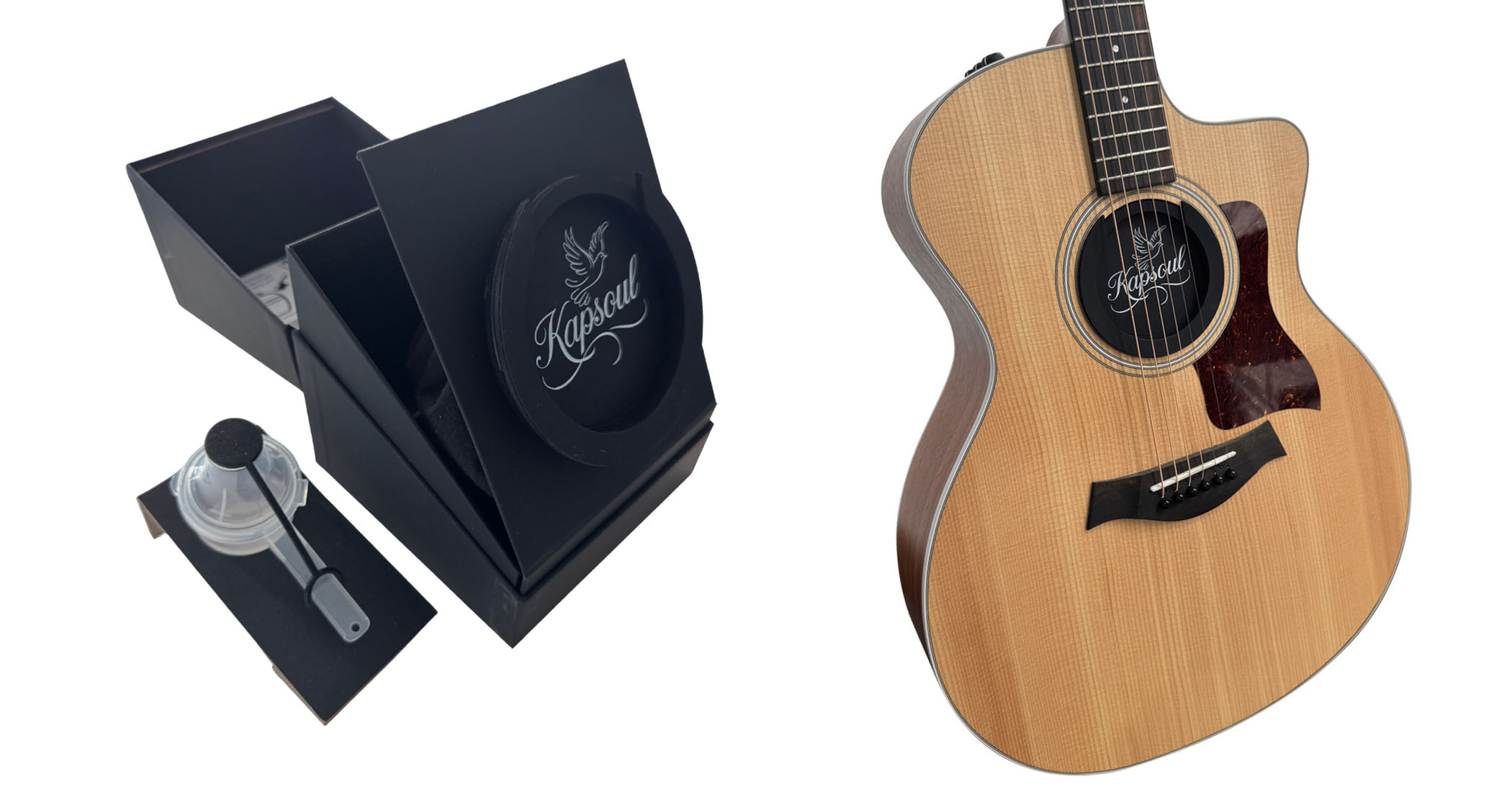“I’ve got a friend in a well-known band, and he says Martins have unnecessary bottom-end. My retort was always: ‘Well, you need to learn to play properly’”: Johnny Marr on the magic of his 7-string signature Martin – and his fight with capo addiction
Since he rose to glory in the mid-’80s with The Smiths, Marr has been the king of crystalline chime. Now, he reveals how his new M-7 Martin – complete with octave G string – puts that shimmer at your fingertips
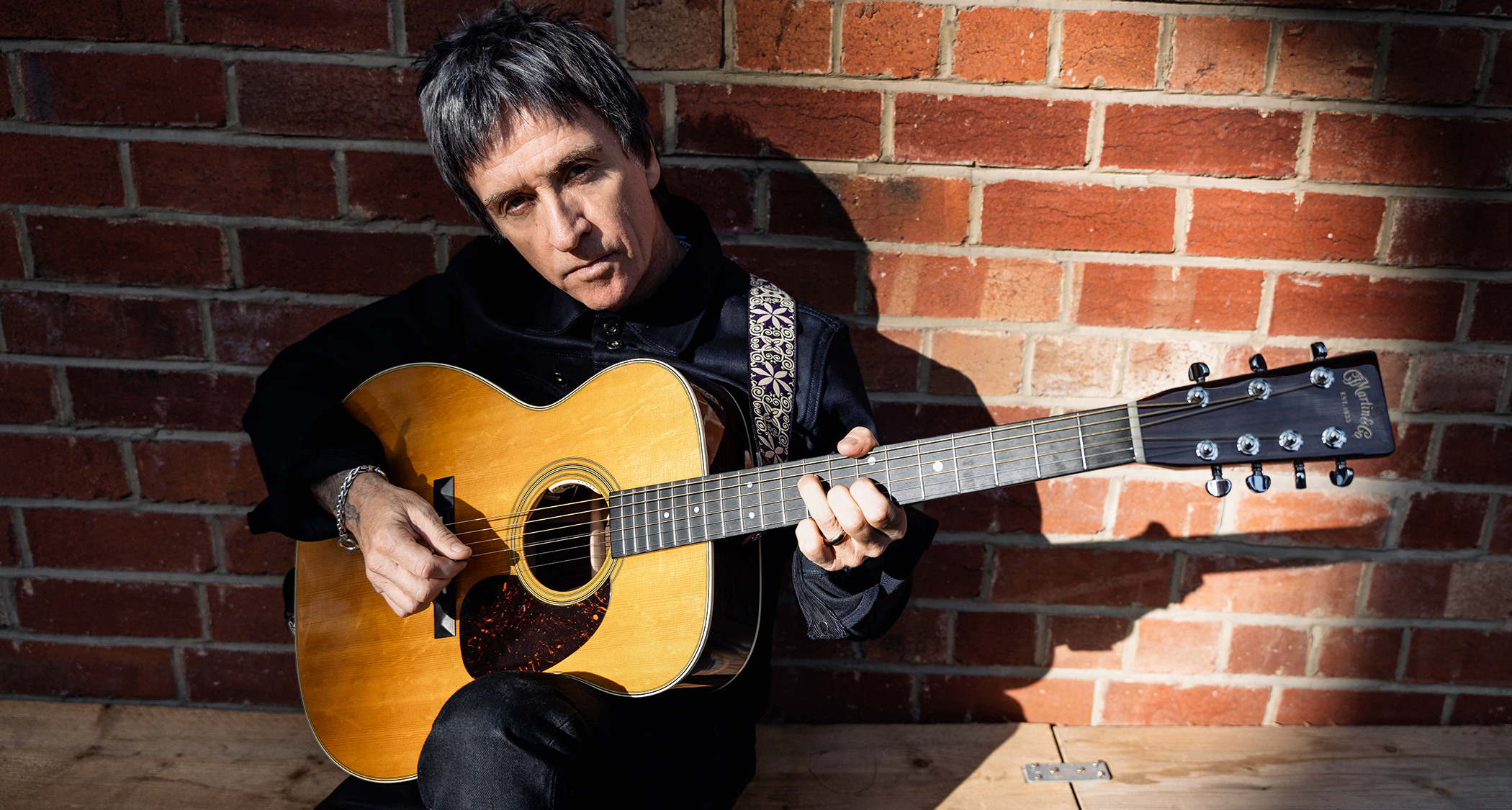
Given that it was designed by the man who quit The Smiths at the peak of their powers in 1987 – having single-handedly invented indie-rock – perhaps we shouldn’t be surprised that Johnny Marr’s new signature Martin M-7 doesn’t stick to the script.
Teaming with the fabled Pennsylvania-based luthier for the project is a logical move: Marr has been loyal to the Martin brand since he hired his first D-28 for The Smiths’ 1985 Meat Is Murder album (and refused to give it back).
But from the hybrid body shape to the three-piece back – not to mention the pièce de résistance, an octave G string – the 61-year-old’s creation is anything but a cynical rebadge, its widescreen jangle and seventh tuning peg making fans question their eyes and ears when he walks on stage.
“You have these instruments that you already think are perfection, so, in my case, the D-28 and D-35,” he considers. “But then, when you change or personalise one aspect, you start getting into invention…”
How did this collaboration start?
“Well, Fred Greene [Martin’s VP of Product Management] contacted me a couple of years ago. We got together at a show in Pennsylvania, near the Martin factory, and about halfway through our conversation, I realised I was being invited to invent my dream Martin out of thin air. Which was such a privilege and surprise.
“What Fred drew out of me were my enthusiasms about different aspects of the guitar. So the M-7 and M-6 [the standard six-string equivalent] were designed very organically. I realised I was daydreaming of this ideal acoustic.”
All the latest guitar news, interviews, lessons, reviews, deals and more, direct to your inbox!
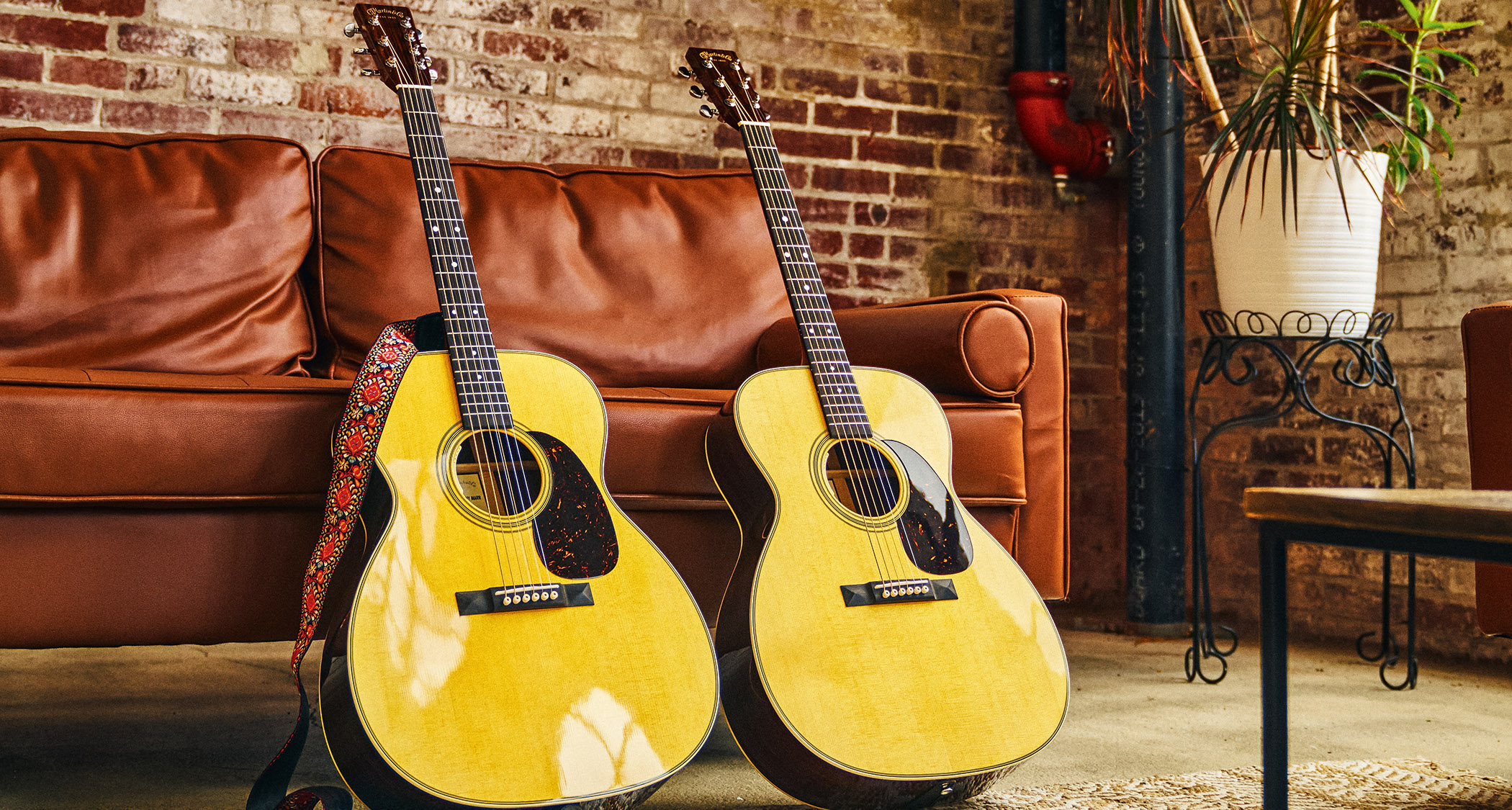
The acoustic has always been in your toolkit, hasn’t it?
“Yeah. My connection to acoustic guitars goes back to the very first guitar sound I was drawn to, which was the strumming of Don Everly on Wake Up Little Susie. But at the same time, also, C’mon Everybody by Eddie Cochran, where the acoustics are layered and loud. There’s this idea that acoustic guitars are about fingerpicking and folk accompaniment.
“I’m an acolyte of Bert Jansch, so I can testify to that. But that really loud, layered, straightforward strumming on those rock ’n’ roll records is a singular sound. You hear Jeff Lynne pay homage to it on Runnin’ Down A Dream by Tom Petty. Or Queen Of Hearts by Dave Edmunds. They’re all echoes of this signature technique that snagged me when I was six or seven.
“I’ve had a lifetime of doing this now, all my adult life. And I’ve always incorporated acoustic guitars into what I do. I mean, this thing I’m talking about – just really driving the acoustic into the ground – I did it on a song from my last solo album called Counter Clock World.
“Other times, I’m playing in tunings, which is something I got from Joni Mitchell, via David Crosby. Through all the records I’ve made, I was very deliberate in putting acoustic guitars to the foreground.”
You’ve said Rory Gallagher was the player who turned you onto Martins.
When I was a kid, I could name the owner and whereabouts of every guitar within a 20-mile radius. And as an adult, I can reel off a whole load of musicians and what acoustic guitar they own.
“Well, that was the first time I ever saw a D-35, when Rory used to do Out On The Western Plain. Sadly, but luckily for me, I got to play that very D-35, not long after Rory passed away.
“And then, my D-28 that I got in the Smiths days in around ’85 – I hired that, and within about 10 minutes, I said to myself, ‘This is not going back.’ That one has magic in it, and I’ve done a lot with it over the years. But then, almost to break out of that, when I started playing with Bert, I used a 70s D-35.
“When I was a kid, I could name the owner and whereabouts of every guitar within a 20-mile radius. And as an adult, I can reel off a whole load of musicians and what acoustic guitar they own.
“For example, Bernard Butler’s got an amazing J-200, as does Ronnie Wood. Then again, one of the best D-28s I ever played belonged to Beth Orton. They really make an impression on me, these guitars. Always have done.”
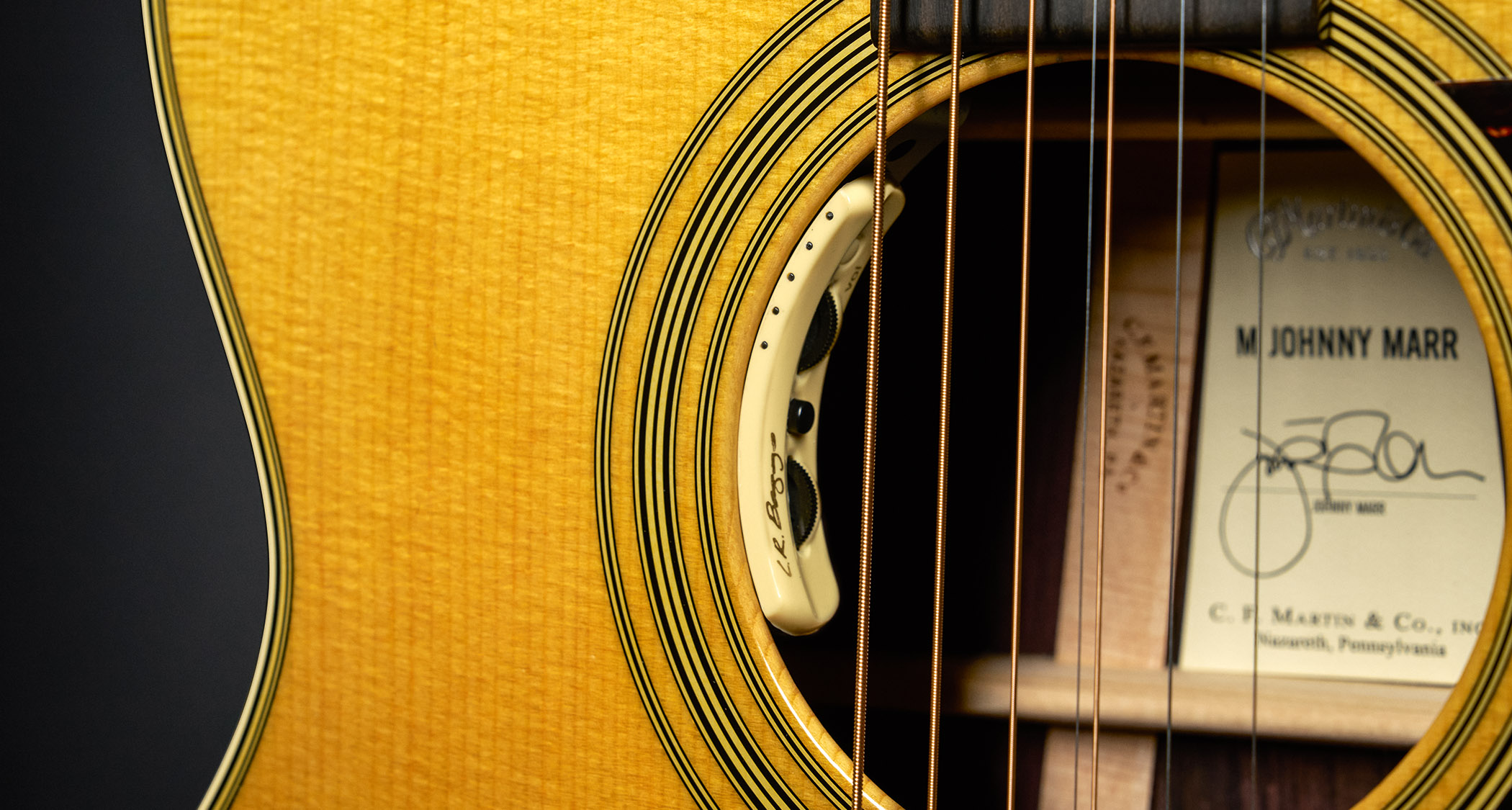
Let’s talk about the M-7’s flagship feature. What inspired that octave G?
“My friend Bill Puplett – who is sadly no longer with us, but he worked on my guitars from 1987 – we had a conversation about a British blues player in the ’60s. I’ve forgotten his name, but he added an extra tuning peg, pin and string to his acoustic, and pioneered this seven-string model.
“I also saw Roger McGuinn talking about his signature model on stage in the late ’90s. I’d never played a seven-string – or heard one in person. But the concept intrigued me and I hoped it would do what I thought it’d do, which was to behave, technically, like a regular six-string acoustic but have something that just delights your ear.”
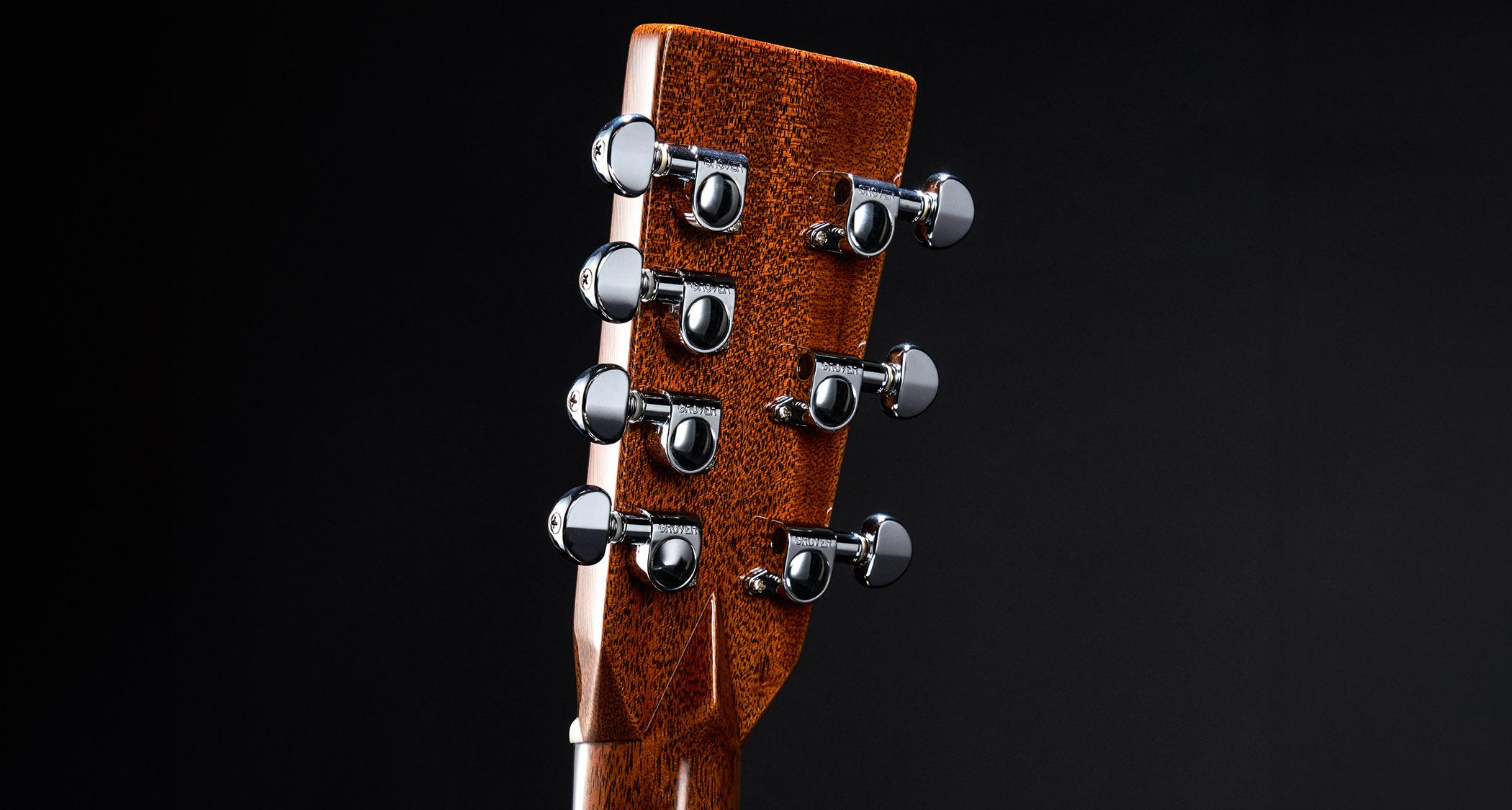
Sonically, the M-7 seems like a close cousin of a 12-string guitar.
“Over the years, I’ve always kept up playing 12-string. Every so often, I’ll go through phases of playing 12-string to keep my acoustic chops up and not get lazy.
“And then, a few days into that, I always go through the same thing, which is, I think, ‘I’m going to get rid of every six-string I own. There isn’t a better sound than this, and anyone who bitches about them being hard to grapple with – buy a tuner.’
“However, sometimes you just don’t want all of that high-octave stuff. So my M-7 does what you think it’s going to do, but it sounds like it’s got added production on it. When I’ve been using it live, I tend to forget that it’s even got the high octave on it.
“And then, sometimes, I’ll really dig in and make a point of playing a little more around that octave. I’ve been living with it now for a long time and I’ve found that regular six-strings almost sound like they’re missing something to me now.”
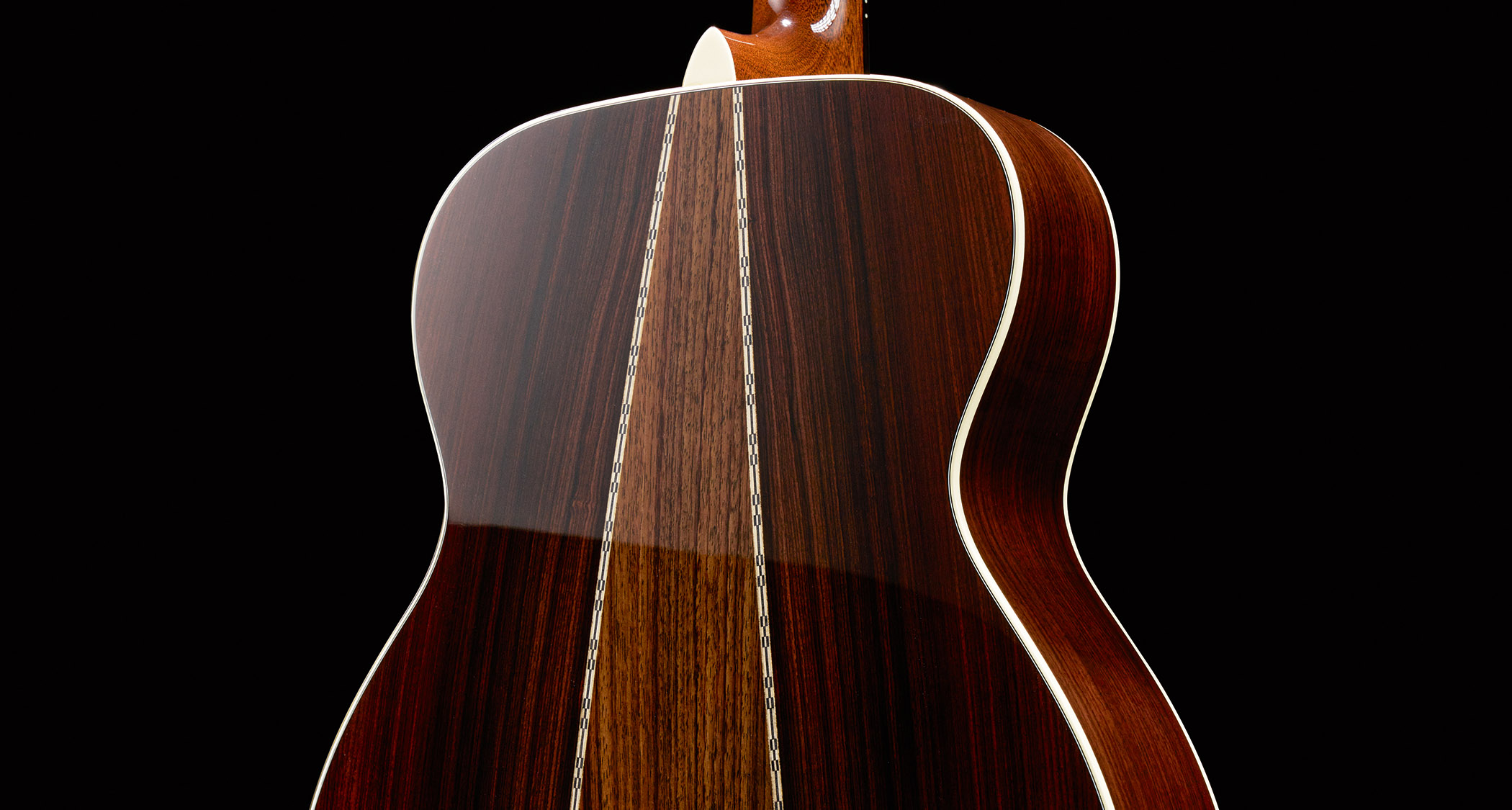
It’s that little bit of extra harmonic information, isn’t it?
“Exactly. Within minutes, you forget it’s there. But you’d notice if it disappeared.
“In spite of that, it was my idea to do the six-string version [M-6] because when I was talking to other players, I could see that when I said ‘seven-string’, they got stuck on that information and I had to qualify what I’d done by saying, ‘But even without the seventh string, it’s still a great instrument.’ I thought we should offer people who may only want one luxury instrument the option of not having that seventh string.
“The six-string version is killer anyway because of all the other things about it. Y’know, the bracing, the shallower M-style body, the three-piece back, et cetera. The neck, as well, is not trying to be all things to all men.
“Which I find frustrating with some modern guitars because in trying to please everyone, sometimes the feel is just so generic. So I was very specific about the dimensions and absolutely adamant that we didn’t have any satin finish nonsense on the back.”
You’re not a fan of satin necks?
“As I understand it, satin necks were a ’90s idea. But I’m of the opinion: ‘If it’s too problematic moving your hand up and down a glossy neck, you’re in the wrong job, mate.’
“I used to read that in the ’80s with some metal players: ‘Oh, I can’t handle it when there’s too much gloss on the neck.’ The only person who’s allowed to say that is Eddie Van Halen.
“I’ve got friends who have taken sandpaper to the neck because they can’t handle the gloss. But it’s like, ‘Stop being a baby. Put the hours in and wear it down yourself.’”
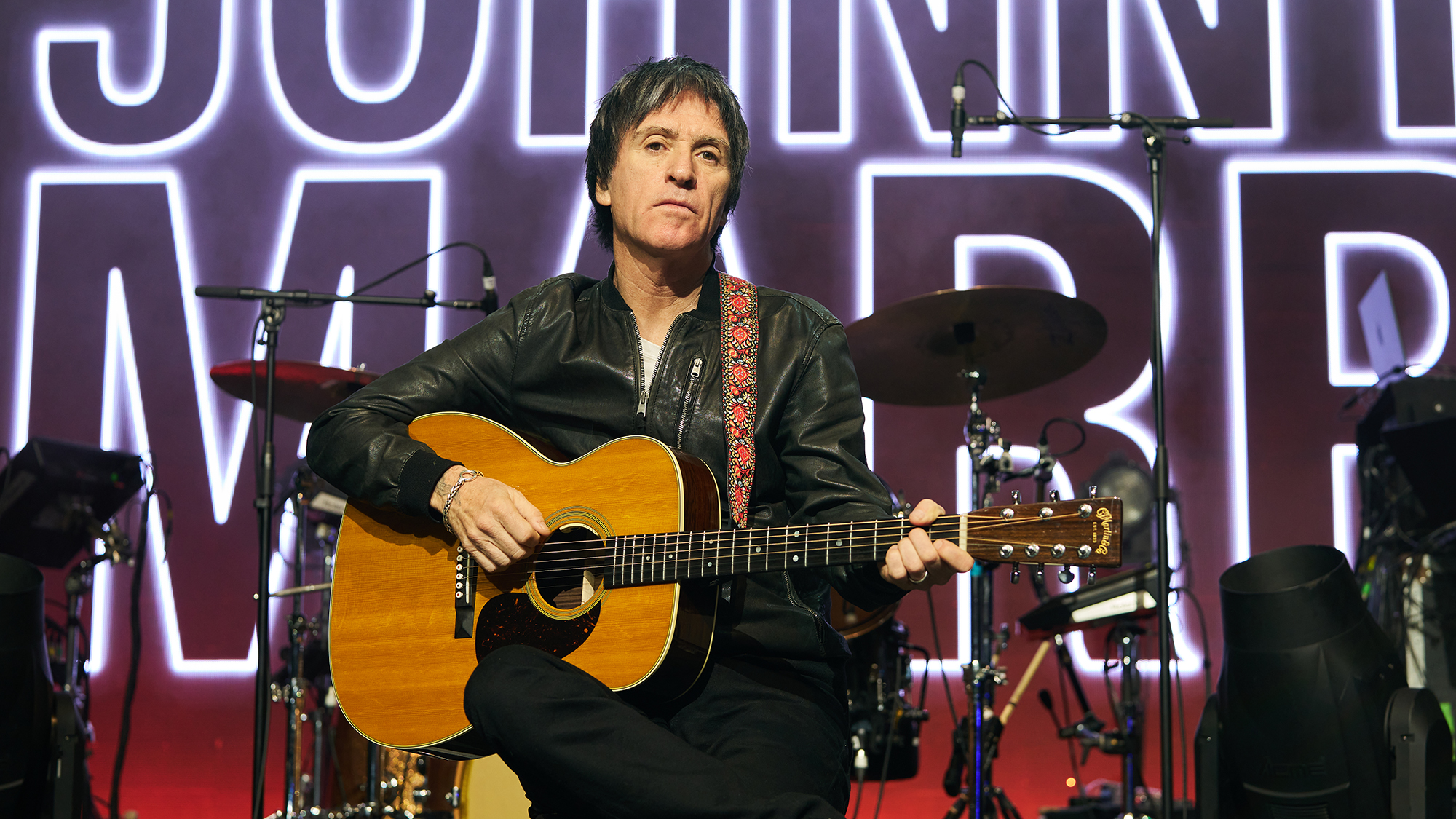
How did you settle on the body shape?
“The seventh string was the first thing I thought of, and then the dimensions of the M-7 was the last remaining piece. I said to Martin, ‘Can I make the front like a D-28 and the back like a D-35: has anyone ever done that?’
I’ve got a friend in a well-known band, and he’s sometimes peeved me about my use of Martins because he says they have unnecessary bottom-end. My retort was always: ‘Well, you need to learn to play properly’
“What I love about both the six- and seven-string version is that the bottom is essentially the size of a dreadnought but the depth means that if you want to play unaccompanied arpeggios and do the West Coast thing – without a pick, just with fingers – it really holds up. But then, if you hammer it like a rhythm guitar, it sounds like The Who.”
Martin guitars have a reputation for mighty bottom-end.
“That’s right. I’ve got a friend in a well-known band, and he’s sometimes peeved me about my use of Martins because he says they have unnecessary bottom-end. My retort was always: ‘Well, you need to learn to play properly using the lower strings and start writing songs in tunings.’ Because he’s a Hummingbird and J-200 freak.
“But with my signature models, I’m trying to do that thing where they sound good recorded and they will take that really punchy rhythm playing. That’s why I say it sounds like The Who. I think a bit of that is down to them being slightly shallower than the dreadnought, but they still have the rest of those dreadnought dimensions.”
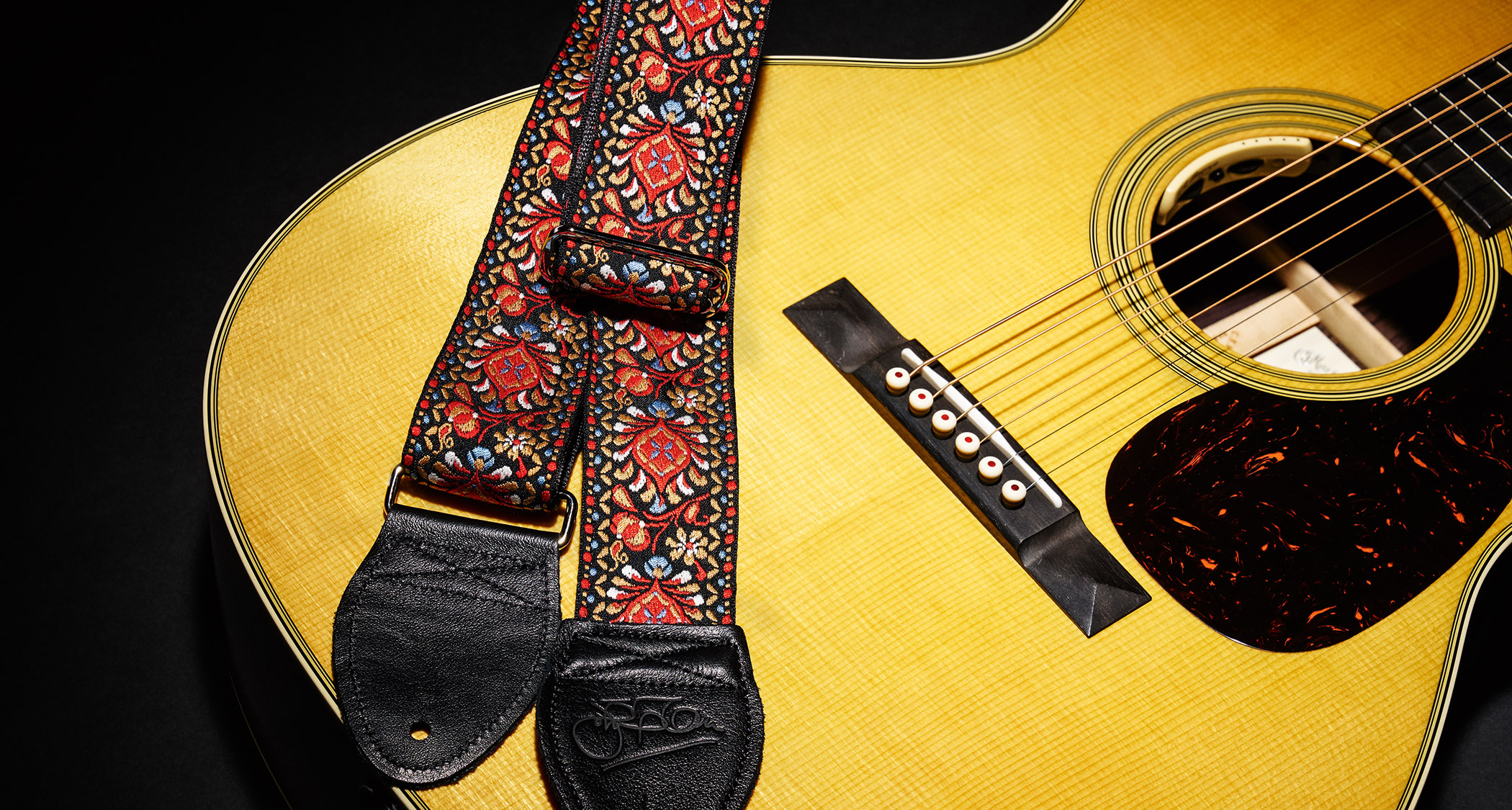
Do you find the M-6 and M-7 more comfortable than a dreadnought?
I almost use capos too much. I’m trying to wean myself off ’em somewhat. I’m not joking. Just Google pictures of me: more often than not I’m using capos
“Well, that was an unexpected bonus. As soon as it arrived, I went, ‘Oh, hello – I could get used to this.’ I’ve been touring with my seven-string and I don’t miss that extra depth of a dreadnought, particularly on stage when you’re going through a PA. You absolutely don’t need it.
“As for the electronics [LR Baggs Anthem], I just went with Martin’s advice. I’ve used them live and they sound great.”
The new model sounds like it would really sing with a guitar capo.
“I almost use capos too much. I’m trying to wean myself off ’em somewhat. I’m not joking. Just Google pictures of me: more often than not I’m using capos, and so many times on the 4th fret. For some reason, guitars like capos on the 4th fret; they sing out really well. In my live show, I move capos around all the time.
“That’s something I learnt really young, when I was copying players like Stephen Stills, and what Bert, Martin Carthy and John Renbourn were doing. These days, on electric, I use G7th capos, but the last few I’ve been using [on acoustic] were actually my old Jim Dunlops, believe it or not. They’re fantastic.”
The spruce top and rosewood body have a lovely warm finish.
“I was really pleased to get the top colour in a shade that I consider to be ‘classic’. Because there’s a lot of acoustics that come out, for some reason, in a shade I don’t like.
“Martin were great about it. I drove them a bit mad about the shade. And I had the option to relic it, but I wasn’t going to do that, given my feelings about the neck.
If someone buys one of my guitars, one day it will be old. It doesn’t need to come out of the box looking pseudo-old
“The thing about old guitars is that people beat them up through playing them, and that’s what I wanted. If someone buys one of my guitars, one day it will be old. It doesn’t need to come out of the box looking pseudo-old.”
Finally, what inspired the retro-cool Souldier strap supplied with the new guitars?
“I’ve had all kinds of different designs with Souldier, and when I came to do these acoustics I wanted a classic colour scheme, and Jen [Tabor, founder] gave me a few options. Because I was a kid in the ’70s, I was seeing a lot of acoustic players, so I went for a sort of ’70s style.
“I get quite obsessive about these things, so I tried out way more designs than I ought to have, but I got there in the end. I remember when you couldn’t get decent straps – I call them the dark times.
“In the ’80s, when I was coming up in the Smiths days… Oh, man. I’d go into guitar shops and could I find one without skull and crossbones on? No. So it’s definitely progress!”
- Johnny Marr’s M-6 and M-7 are available now from Martin Guitars.
- This article first appeared in Guitarist. Subscribe and save.
Jamie Dickson is Editor-in-Chief of Guitarist magazine, Britain's best-selling and longest-running monthly for guitar players. He started his career at the Daily Telegraph in London, where his first assignment was interviewing blue-eyed soul legend Robert Palmer, going on to become a full-time author on music, writing for benchmark references such as 1001 Albums You Must Hear Before You Die and Dorling Kindersley's How To Play Guitar Step By Step. He joined Guitarist in 2011 and since then it has been his privilege to interview everyone from B.B. King to St. Vincent for Guitarist's readers, while sharing insights into scores of historic guitars, from Rory Gallagher's '61 Strat to the first Martin D-28 ever made.
You must confirm your public display name before commenting
Please logout and then login again, you will then be prompted to enter your display name.



